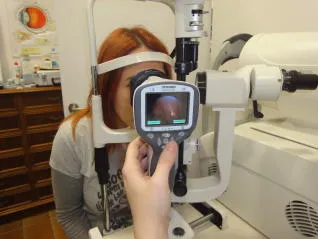The role of optical-optometrist in the detection and control of diabetes is fundamental, possible and desirable.There are tools available so that the optic can evaluate the posterior segment without the need for pupillary dilation.
How does diabetes affect the ocular system?
People with diabetes have a higher risk of blindness and, in general, in them there are a series of visual changes and problems such as changes of visual acuity, glaucomas, cataracts, diabetic retinopathy, not proliferative and proliferative and diabetic macular edema.
What can the optician do to detect diabetes or their complications?
The optic is the primary visual attention professional at street level, very accessible to the entire population.One in four patients accessing an optics has diabetes and professionals carry out a complete visual study that includes: complete medical history of the patient, perform a refraction, examine the anterior segment of the eye and, most importantly, also review the posterior segmentof the eye (retina) with the instruments that are available to the optician without dilating.
Early detection and diabetes control
If it is not diagnosed, the optic can and should detect signs compatible with retinopathy.If it is also seen that the patient has obesity or takes care of little, it is probable that it is a diabetic retinopathy.The most important thing is to detect the problem and send it to the primary care doctor to perform the diagnostic tests.
If it is already diagnosed, the optical function is very useful, because, for example, a patient diagnosed with mild retinopathy does not return to the ophthalmologist in a year.
As Covadonga Sanz indicates, with two open optics in La Felguera, "the optics are the first filter to detect numerous diseases."
Domestic optics:
Celestino Calle Cabeza 12 bass
La Felguera.
Tel. 984 283 305
Manager: Covadonga Sanz



